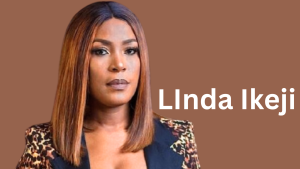In a bold step to strengthen its community policy, Google made an announcement that shook the creator economy: it will begin shutting down AI-generated YouTube channels starting July 15, 2025. This action comes with growing concerns over misinformation, copyright violations, and the erosion of authentic content on the platform.
If you’re a content creator who is leveraging AI tools like ChatGPT, Sora, Synthesia, Pictory, or Lumen5 to produce video content. This news is for you because it could have a direct impact on your channel’s future and video creation journey. Here’s what’s happening and what you need to do next.
Why Is Google Cracking Down on AI-Generated Content?
1. Misinformation and Fake Narratives
People are taking advantage of generative AI in spreading fake information. Therefore, Google reports an increase in AI-generated content that is spreading misleading or false information. From AI avatars sharing fake news to deepfake voiceovers mimicking celebrities, experts, or leaders, these videos can go viral quickly, causing real-world consequences.
2. Low-Quality Content Flood
With the increase of text-to-video and voice cloning tools, thousands of low-quality and spam-like videos are being published daily on YouTube. Many channels upload hundreds of AI-generated videos per week, leading to a flood of content that clutters the platform and diminishes the viewer experience. These lead to the high consumption of low-quality videos by the viewers; therefore, Google take this step to increase the volume of high-quality videos on YouTube.
3. Copyright and Ethical Concerns
AI tools often remix copyrighted material, voices, and imagery without proper licensing. Even when creators believe they’re using “fair use” content, AI-generated videos often skirt legal and ethical boundaries. Google wants to avoid potential lawsuits and protect artists, musicians, and filmmakers.
Who Will Be Affected?
Google’s policy update will primarily target completely AI-generated YouTube channels. Therefore, this policy will primarily affect the following types of channels:
- Channels with fully automated, AI-generated video content.
- Channels publish deepfakes or voice-cloned videos without disclosure or consent.
- Spammy YouTube automation accounts are designed purely for monetisation.
This policy does not affect creators who use AI tools ethically, such as for script assistance, editing support, or enhancing production quality. Human-guided creativity is still welcome and encouraged.
What to do before July 15, 2025
If you are using fully AI-generated content in your YouTube channel, here are the four things to do to avoid the shutdown of your channel:
- Add human effort to your videos.
Instead of allowing AI to do everything, ensure a real human is reviewing and approving your scripts, facts, and visuals. Add personal commentary or real-time narration to your videos. Use your natural voice for the voice-over and something similar to that.
- Disclose AI Use
Disclose in the video description or on-screen if AI tools were used. Transparency will go a long way in meeting YouTube’s new policy guidelines. This will help YouTube to clearly understand that AI tools are used in some part of your video.
- Avoid Deepfake Content
Don’t use AI to mimic real people’s voices or faces unless you have explicit permission. Deepfake content is now a major red flag.
- Focus on Value
YouTube rewards videos that educate, entertain, or inspire. If your AI content doesn’t offer original insights or value to viewers, consider revising it or adding more human elements.
What This Means for the Future of AI in Content Creation
This move signals a turning point in the creator economy. While AI will remain a valuable assistant for content creators, automation without authenticity is no longer welcome on platforms like YouTube.
Google’s decision isn’t anti-AI, it’s pro-human creativity. The future belongs to creators who blend AI efficiency with authentic storytelling, ethics, and originality.
Google’s July 15 purge of AI-generated YouTube channels is not a death sentence for AI in content, it’s a wake-up call. Creators must adapt, innovate, and prioritise authenticity in a digital world where content is cheap but trust is priceless.
If you’re a content creator using AI tools, now is the time to audit your strategy, clean up your content, and bring back the human touch. To understand more about AI content creation, read this article




